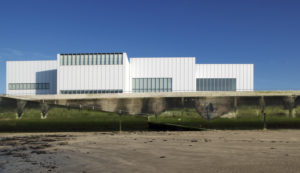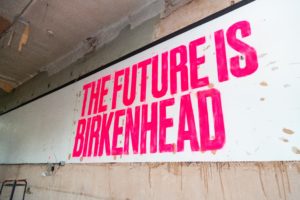Cultural Placemaking and Grassroots Social Enterprise
In this blog, Head of Arts & Culture Finance Seva Phillips, makes the case for the role of culture and cultural institutions in driving the social and economic development of a place and highlights the support grassroots cultural entrepreneurs need in order to ensure this kind of development is community focused and inclusive. Join us for a webinar on Tuesday 17th May where Seva will discuss this topic in more detail with Nichole Herbert from Second Floor Studios & Arts, Mark Davyd from the Music Venues Trust and Bonnie Hewson from Power to Change.
The role of culture in place
A desirable place is one that people are drawn to and are proud of. A place achieves this quality by having something interesting, beneficial or attractive going on it, with these things creating, over time, a sense of pride. There could be many activities and many things to feel proud of, however ‘culture’ in the broadest sense of the word, seems to cover a lot of this activity. By culture we could mean the history and heritage of a place, its recreational activities (including sports), natural features, cuisines and how its people relate to one another.
The more the cultural life of a place is nurtured, the more it is likely that it will become desirable, a place that people want to travel to or somewhere that local people take pride in. This in turn develops a sense of identity, belonging and growth as more people and resources are drawn to a place. Consider the role of the following in their contribution to place: museums and galleries, like Beamish and Bowes in County Durham or the Turner Contemporary in Margate; music venues like Oxford’s Jericho Tavern, the Mayfield Depot in Manchester, theatres like the Everyman in Liverpool, the Royal Shakespeare Theatre in Stratford-upon-Avon, festivals like the Edinburgh Fringe, Hay and Machynlleth’s Comedy Festival. And that’s before naming the many world famous cultural institutions of London that draw in visitors from around the globe.
It may, of course, be said that other things also drive the development of a place – political, economic, religious factors, or even certain charismatic people; perhaps it is these things that really underpin all culture. Clearly this is a complex question to get to the root of; but I think all that matters here is to say that in so far as we have a degree of agency over culture, then it is valuable and valid to development – even if the study of its component parts reveals more nuanced, interrelated causes.

The Turner Contemporary Museum in Margate
The role of (physical) space in culture
Whilst culture itself might often be quite abstract, interrelational and conceptual, it is clearly aided by the demarcation of physical space, a material context for people to come together that amplifies what takes place and which draws others in. Makeshift football pitches can be assembled in a garden, a street or a car park but the beautiful game is given greater status and significance when it takes place in a purpose built stadium. Equally, the creation and performance of music – sometime solo, sometime collaborative endeavour – can take place anywhere but is given prominence, audience and spectacle on a stage, a music venue or a festival. Specific cultural objects – from new books to old arrowheads – likewise find greater context in spaces that celebrate them, be they libraries or museums. And whilst the digital age has certainly created new spaces for the transmission of culture, it has not taken away the eminence of the old. Online broadcasts happen from particular places that people still want to visit (e.g. the National Theatre, Glastonbury). Even relatively new forms of cultural activity that take place almost exclusively in a virtual sphere (e.g. video-games, e-zines, online forums) – these sit alongside the physical as a new medium; they are not a replacement for it.
Grassroots social enterprise & more equal culture
Making physical spaces for culture is therefore important to its growth, which, in turn, becomes a key driver for the development of a place. But – as we all now know – this ‘placemaking’ is not a risk-free process. The key risk being gentrification; the exclusion of certain groups from the benefits of a place, the exacerbation of existing inequalities, the disempowerment and alienation of local communities from the process; the Disneyfication of the world. So how can cultural placemaking – the creation of spaces in places where culture can happen – avoid such pitfalls? By making sure that it is inclusive; by the community, for the community; self-aware; democratic in spirit if not always in practice.
The words I would like to use here are grassroots social enterprise. This means relatively small-scale, independent & local enterprise that is sensitive to the needs of local people and strives to meet them in appropriate ways. It also means the reinvestment of profits back into communities, which translate into improved services and experiences for them. The Arts & Culture Finance portfolio is full of examples like this: The Old Courts multi-arts centre in Wigan, which is spearheading cultural placemaking in the borough by also leading the redevelopment of the Royal Court Theatre in the town as well as the famous Wigan Pier; Future Yard, a grassroots music venue and arts hub in Birkenhead working closely with local people to help shape its programming; The Pipe Factory, a former 19th century clay pipe factory in Glasgow’s historic East-End that will, in the future, become a creative hub for young people and the local community.
Provided that the enterprise follows the above principles of what it means to be grassroots and social, it can take on all manner of organisational forms, including private companies limited by shares. There exist many examples of private businesses that are also cultural social enterprises doing good work in their communities, from EartH in Hackney to Kurious Arts in Sheffield. But we should also be encouraging proliferation of charities, community interest companies and community ownership models that lock-in assets for long-term social benefit.

Edinburgh Fringe Festival © Andrew Pickett
Seizing cultural opportunities
As a team, we believe that far more opportunities for cultural placemaking exist using a grassroots social enterprise model. There are assets (typically, property) in every community around the UK that either have culture and heritage baked into them or the potential to become such assets; some of these will be actively looking for buyers; others will be waiting for the right opportunity to be sold. Entrepreneurs that are motivated primarily by profit typically have more and better access to capital than their more socially minded peers, because most banks and financial institutions are also motivated largely by profit. But the focus on only making money also gives them a simplicity of purpose that takes a lot of complexity out of decision making, compared to entrepreneurs that take their impact on the community into account. Together, these points give for-profit entrepreneurs an edge in seizing assets; they allow them to move more quickly on opportunities.
What do cultural entrepreneurs need?
If we’re to enable grassroots social entrepreneurship in the cultural sphere – to establish new, exciting spaces for vibrant cultural life that, in turn, create inclusive, more equal places – we need to empower cultural social entrepreneurs. This means giving them the knowledge, skills and resources to take advantage of property opportunities in their communities. This might include the following:
- Knowledge: where to find opportunities (i.e. networks; connections with local developers, local authorities); technical requirements (e.g. architecture / design / planning, business planning, financial modelling, where to access necessary resources).
- Skills: writing proposals, financial management (inc. budgeting, scenario modelling), advocacy, pitching & networking. Personal qualities might also sit here; the confidence, resilience and energy necessary to bring a project to fruition.
- Resources: time, money (grants, donations, repayable finance), networks (enablers [e.g. LAs], funders, audiences, vendors,)
The absence of the right kind of money for social enterprise (relative to the for-profit sector) acts as a structural barrier to the creation of a more just world. Arts & Culture Finance seeks to address this point, providing affordable and flexible repayable finance to cultural social enterprises on behalf of our public, private and philanthropic funders, with a view to launch new and better funds for this purpose over time. Through our case studies, we hope to demonstrate how others have used this type of funding in order to inspire others.
We also welcome campaigns to launch new funds that will facilitate the transfer of assets from private hands into community ownership, such as the Highstreet Buyout Fund by Power to Change, as well as existing initiatives like Resonance’s Community Developers and the Community Shares Unit. And resources like Good Finance that already offer information on repayable finance (social investment), sources of finance as well as case studies from beyond arts & culture.

Future Yard in Birkenhead
New ideas for support
Going beyond money, cultural entrepreneurs also need access to skills and local knowledge. But what are the ways in which this can be imparted efficiently? Here are some ideas:
- More conversations: we’d like to see more dialogue between funders, investors, entrepreneurs, developers and local authorities on the subject in order to raise awareness of opportunities, local challenges and success stories.
- An online resource bank for cultural entrepreneurs with guides, templates and links to information on doing this for themselves.
- Coaching & mentoring: buddying up entrepreneurs further along on the journey with those just starting out, so that they are more supported in navigating the many challenges associated with starting up new ventures.
- A more joined-up approach between funders, recognising enquiries and applications from grassroots cultural entrepreneurs and connecting them up with other relevant funders and sources of support.
In the spirit of point 1 above, we’ll be kick-starting this conversation by hosting a webinar and panel discussion on Tuesday 17th May on this very subject. In this session we’ll run through some of the ideas expressed here and specific use-cases of repayable finance, as well as welcome questions and comments from the audience.
We’d love to hear your ideas and thoughts, if you’d like to contribute to the conversation, please join us at the event, leave a comment or send your feedback to [email protected]
